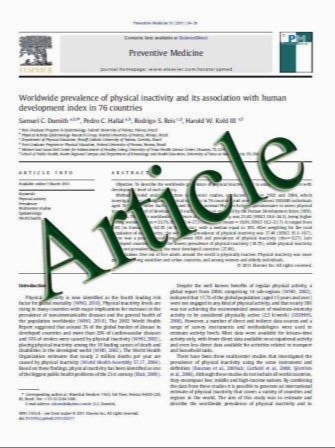Additional erythrocytic and reticulocytic parameters helpful for diagnosis of hereditary spherocytosis: results of a multicentre study
- نوع فایل : کتاب
- زبان : انگلیسی
- مؤلف : François Mullier & Elodie Lainey & Odile Fenneteau & Lydie Da Costa & Françoise Schillinger & Nicolas Bailly & Yvan Cornet & Christian Chatelain & Jea
- چاپ و سال / کشور: 2010
Description
Hereditary spherocytosis (HS) is characterised by weakened vertical linkages between the membrane skeleton and the red blood cell’s lipid bilayer, leading to the release of microparticles. All the reference tests suffer from specific limitations. The aim of this study was to develop easy to use diagnostic tool for screening of hereditary spherocytosis based on routinely acquired haematological parameters like percentage of microcytes, percentage of hypochromic cells, reticulocyte counts, and percentage of immature reticulocytes. The levels of haemoglobin, mean cell volume, mean corpuscular haemoglobin concentration, reticulocytes (Ret), immature reticulocytes fraction (IRF), hypochromic erythrocytes (Hypo-He) and microcytic erythrocytes (MicroR) were determined on EDTA samples on Sysmex instruments from a cohort of 45 confirmed SH. The HS group was then compared with haemolytical disorders, microcytic anaemia, healthy individuals and routine samples (n=1,488). HS is characterised by a high Ret count without an equally elevated IRF. All 45 HS have Ret >80,000/μl and Ret(109 /L)/IRF (%) greater than 7.7 (rule 1). Trait and mild HS had a Ret/IRF ratio greater than 19. Moderate and severe HS had increased MicroR and MicroR/Hypo-He (rule 2). Combination of both rules gave predictive positive value and negative predictive value of respectively 75% and 100% (n=1,488), which is much greater than single parameters or existing rules. This simple and fast diagnostic method could be used as an excellent screening tool for HS. It is also valid for mild HS, neonates and ABO incompatibilities and overcomes the lack of sensitivity of electrophoresis in ankyrin deficiencies.
Ann Hematol (2011) 90:759–768 DOI 10.1007/s00277-010-1138-3 Received: 22 August 2010 / Accepted: 7 December 2010 / Published online: 22 December 2010


